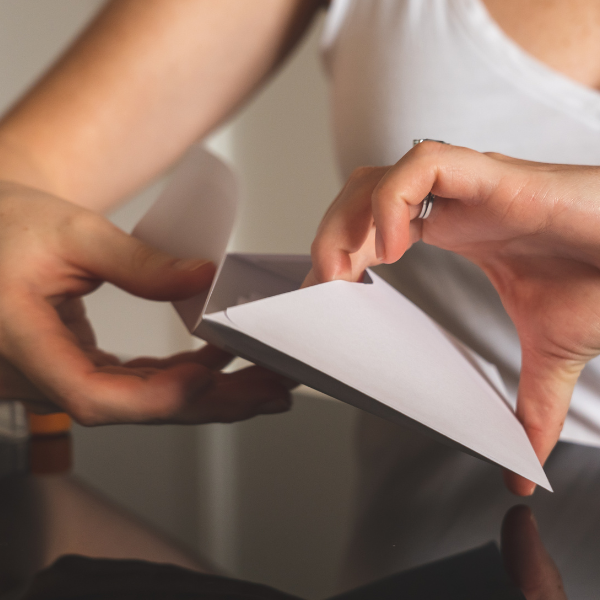
While learning how to write an effective fundraising appeal letter is a must for any fundraiser, there’s another type of outreach that’s just as critical – the donor acknowledgment letter.
Not only are donation acknowledgments a requirement in some cases, they play a critical role in your fundraising cycle.
In this article, we cover why donor acknowledgments are important and how to write a sincere letter that will resonate with your supporters. Plus, find a couple of donor acknowledgment letter templates to help you get started!
Why Should I Send Donor Acknowledgment Letters?
For one, written acknowledgments are required by the IRS for charitable contributions of $250 or more. These can be sent to a donor every time a gift of this amount is made, or you can send them as a year-end tax summary.
In addition, these acknowledgments allow you to confirm receipt of a contribution with your donors. This gives them peace of mind while also building a positive relationship with them.
And it also just feels good to be thanked!
It’s proper etiquette to send thank-you notes for wedding gifts. And we’ll bet your grandma appreciates a call after you receive your birthday card from her.
So why wouldn’t donors feel the same?
Acknowledging your donors’ contributions with a letter of gratitude increases the likelihood they will give again. Because you made them feel that their gift was needed, appreciated, and made a real impact!
Donor Acknowledgment Letters vs. Donation Receipts
You’re probably asking – why not just send a basic donation receipt?
Donation receipts typically include just the necessary information required by the IRS, such as the donation amount and date. They are often automatically printed or sent via email after a donation has been made.
Yes, a donation receipt meets the requirements put forth by the IRS and confirms that your nonprofit has received the donor’s gift. And they take less time and effort (especially if they are automated).

However, these receipts typically lack the genuine gratitude better conveyed through an acknowledgment letter.
The best solution is to send both – particularly if a donor gives online. Set up your fundraising platform to send automated receipts every time a gift is processed. This way, a donation is confirmed as quickly as possible. Then, follow that receipt up with a mailed donor acknowledgment letter. And always include a letter with your year-end tax summary to donors!
Tools of the Trade – Look for donation software – like Donorbox – that enables you to customize automated receipts. Include a brief note of gratitude along with the necessary donation information (sending a separate letter is still recommended in most cases).
Donor Acknowledgment Letter Best Practices
So how do you fit everything you need to send into one donor acknowledgment letter and still make it sound sincere? Here are five best practices to use.
1. Send a donation acknowledgment for every gift.
While you’re only required to send a written acknowledgment for charitable contributions valued at $250 or more, it’s good to acknowledge every gift to your organization – no matter the size. You don’t always know which supporters may be cultivated to become major donors in the future!
If needed for budgetary or time-saving reasons, you could set a threshold for sending mailed vs. emailed donor acknowledgments. For example, send a personal email for gifts under $100 with mailed letters going to those above that amount.
But we suggest always sending mailed donor acknowledgment letters in these instances:
- A first-time donation
- A gift from a LYBUNT or SYBUNT donor
- An increased donation
Receiving an acknowledgment via mail will typically stand out more than one in an inbox. And it gives you the opportunity to include personal touches like a handwritten note or signature (more on this later).
Tip from the Playbook: Have a recurring donation program? This is where automated donation receipts play a big role! Send an automated receipt for each gift and mail donor acknowledgments at specific intervals – for the first gift, for an increased gift, and with the year-end tax summary. You can add in quarterly phone calls, annual thank-you cards, and other outreach focused on gratitude for these donors as well.
2. Include all of the required information.
Written acknowledgments required by the IRS must include this information:
- Name of the organization
- Date of the contribution
- Dollar amount of a cash contribution
- Description (but not value) of a non-cash contribution
- If applicable, a statement that no goods or services were provided by the organization in exchange for the contribution
- If goods or services were provided in return for the contribution, a description and good faith estimate of said value of goods or services
- A statement that goods or services, if any, that the organization provided in return for the contribution consisted entirely of intangible religious benefits (if that was the case)
To keep things as turnkey as possible, include this information in all of your donor acknowledgment letters – even those below the $250 threshold.
3. Don’t just thank your donor – show their impact.
Thanking your donors is certainly a donor acknowledgment letter best practice. While it’s not required by the IRS, showing gratitude ensures your supporters know their contributions are appreciated.
Take this one step further by letting your donors know their gifts aren’t just valued by your nonprofit – they are making a real difference.
This can be done by showing tangible impact, such as data, stories, or quotes. Data points might include the number of people, animals, or acres of land helped over a period of time. And stories and quotes can come directly from those you serve, or from volunteers or board members.
4. Personalize each donor acknowledgment letter.
Just like your fundraising appeals, it’s important to make your donation acknowledgment letter sound like you’re writing to a friend.
One of the best ways to do this is to personalize your letters as much as possible.
Start with the salutation – use each donor’s preferred name. While it’s not typically recommended to use greetings like “Dear Friend” in your appeals, it should especially be avoided in donation acknowledgments. If they have donated to your organization, you’ll most likely have their name on file!

You can also personalize the impact you share in the letter. Make sure to do so if the donation came through for a specific program or campaign or if you know the donor has a special interest in a certain aspect of your mission.
Then comes the signature. Whenever possible, have the letter personally signed by a recognizable member of your organization. If needed, you can digitize the signature, but a hand-signed letter will carry extra weight!
And you’ll get bonus points if you include a hand-written note of thanks as well. Use a different color ink or even a sticky note to ensure the message stands out!
5. Be as timely as possible.
It’s vital to send your donor acknowledgment letters as soon as possible when a gift is made. This will show donors that your nonprofit is on top of things and truly appreciates each donation that comes through your doors.
For one-off donation acknowledgments sent throughout the year, it’s recommended that you send them within 48 hours of receipt. As for end-of-year tax letters, most nonprofits aim to send them out by January 31.
Writing Your Donor Acknowledgment Letters
When it comes time to write your donor acknowledgment letters, we recommend having two types ready to be edited and sent to your supporters. This will save you time in the long run and ensure you are consistently including all of the necessary information.
First, draft your standard donor acknowledgment letter. This will be the letter you send to donors throughout the year. Remember to personalize it as much as possible!
Next, write your end-of-year tax letter. This will be sent annually to all of your donors along with their tax summary, and is helpful as your donors gather their paperwork for tax season. As long as you include an official tax summary with the IRS-required information, you don’t need to repeat it in the letter itself.
Due to the number of letters you’ll need to send at one time, your year-end donation acknowledgment may not be as personalizable as the letters you send throughout the year.
We’ve put together a standard template for each of these acknowledgments – feel free to use them as you write your own!
Donor Acknowledgment Letter Template
| [Organization Name/Letterhead] Dear [Donor’s Preferred Name], It is with immense gratitude that I’m reaching out to thank you for your recent contribution of [gift dollar amount or description] on [date of contribution]. Your gift went to work immediately here at [Organization Name], making a real difference in our area. [Insert data point specific to the organization’s mission.] It is because of people like you that we are able to [insert additional data or a story related to the mission, personalized to the donor’s interests, if possible]. Thank you for your continued support of [your beneficiaries, i.e. your neighbors, animals in need, a cleaner world, etc.] Gratefully, [Signature] [Printed Name][Title] [Statement regarding whether goods or services were provided by the organization in exchange for the contribution.] |
Nonprofit End-of-Year Tax Letter Template
| [Organization Name/Letterhead] Dear [Donor’s Preferred Name], Your support meant the world to [Organization Name] this past year! In [year] alone, we were able to help [number] [people/animals/habitats/etc.] throughout the [area where the organization operates]. [Option to enter additional data points.] Thanks to you, [insert specifics or a story related to the mission]. [Name] said it best, [quote from beneficiary, volunteer, or recognizable board member]. I have enclosed a detailed donation summary from [year] for your records. Thank you for joining us in [insert mission specifics]. Gratefully, [Signature] [Printed Name][Title] [Statement regarding whether goods or services were provided by the organization in exchange for the contribution.] |
One Last Donor Acknowledgment Letter Tip
Now that you’re ready to craft your own donor acknowledgment letter, we have one more tip for you: write from the heart!
Your donors will be able to tell when you are genuinely grateful for their contributions. And this will make a big difference when it comes time to decide who they give their hard-earned dollars to next time!
So, there you have it – our best practices for writing a donor acknowledgment letter:
- Send an acknowledgment for every gift.
- Include all details required by the IRS.
- Demonstrate real impact.
- Personalize as much as possible.
- Be timely.
- Write with genuine gratitude!
And if you need extra help writing or reviewing your donation acknowledgments – or any outreach – contact us at MVP Advisors! We’re a team of nonprofit consultants available to help with fundraising strategy, donor acquisition (and retention), content development, and more. Email us or schedule a call today!
